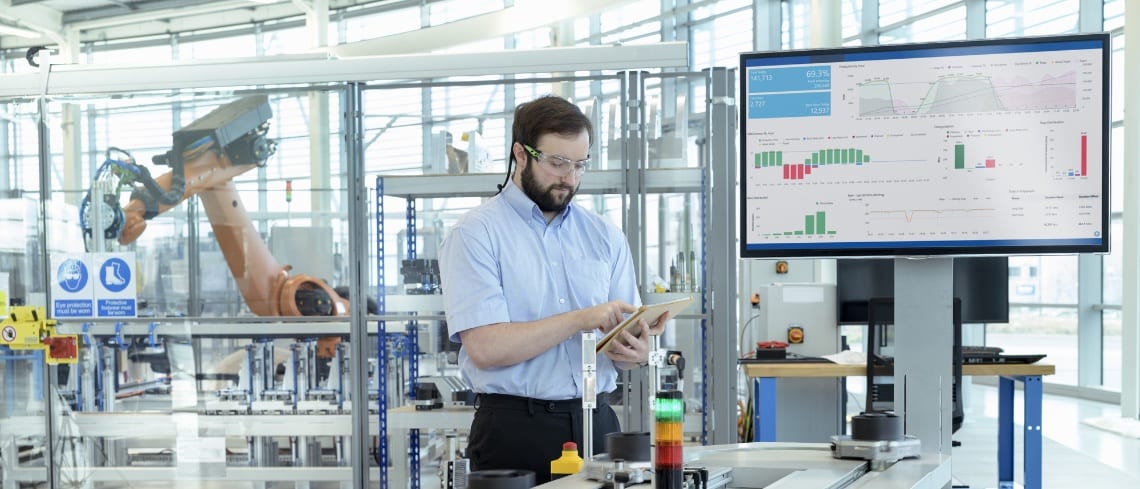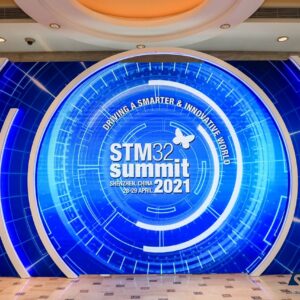Update, May 7, 2021
EBV Elektronik and ST are offering the possibility to win one of 30 STEVAL-STWINKT1B by simply filling up a registration form. The contest runs until the end of May and is available to all regions. To better understand what the STEVAL-STWINKT1B is and what it can do, check the blog post below.
See how the STEVAL-STWINKT1B can manage smart sensor nodes in condition monitoring and predictive maintenance applications.
Original Text, March 9, 2021
The recently released STEVAL-STWINKT1B board opens the door to secure data logging processes, thanks in part to its STSAFE-A110, original software packages, and new machine learning applications, among other things. Readers of The ST Blog are familiar with the previous STEVAL-STWINKT1. ST launched it in March 2020 as an industrial IoT node tailored for condition monitoring and predictive maintenance. It used an IIS3DWB vibration sensor and it was a key component in a full end-to-end solution featured at AWS Manufacturing and Industrial IoT Web Day. The STEVAL-STWINKT1B serves as its replacement. It is already available at major distributors for less than USD 150 and offers a design refresh. Let us, therefore, examine the new hardware configuration, what it enables, and determine who would benefit from the new platform.
STEVAL-STWINKT1B: A Hardware Refresh for More Security and Greater Performance
STSAFE-A110
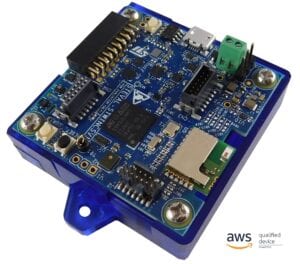
One of the motivations behind the release of a new generation of development boards comes from the need for more security. Developers must create increasingly secure systems, which often means thinking about security while working on the proof-of-concept. Hence, ST made it a priority to update the new STEVAL-STWINKT1B with an STSAFE-A110 secure element. The PCB of the previous platform only had a footprint for a secure element. Engineers could order an STSAFE device separately and then solder it onto the board. At the time, it was the only way to enjoy features like AWS Multi-Account Registration. Today, the STEVAL-STWINKT1B inaugurates the presence of an STSAFE-A110 by default, thus making critical security features more accessible.
Bluetooth 5.0 and Ultrasound Microphone
The ST engineering team took the opportunity of this new release to change a couple of other components. Keeping a similar configuration between the STEVAL-STWINKT1 and the STEVAL-STWINKT1B ensures compatibility with existing software packages. However, the new model now includes a BlueNRG-M2S processor compatible with Bluetooth 5.0. Similarly, ST is introducing a new analog ultrasound microphone instead of the regular analog one found on the previous board. Indeed, the IMP23ABSU offers a larger 80 kHz bandwidth for industrial applications. Finally, the board features a new standalone mode for operations in the field. Thanks to a user button, developers relying on the ST Function Pack for data logging no longer have to depend on a PC command-line interface.
STM32L4R9 Ultra-Low-Power MCU
Too many engineers dismiss AI on embedded systems thinking they need a big processor and a ton of memory. The new STEVAL-STWINKT1B disproves this misconception by leaning solely on its ultra-low-power microcontroller, the STM32L4R9. The MCU’s Cortex-M4 runs at 120 MHz, its power consumption is only 110 µA/MHz, and it has 640 KB of RAM as well as 2 MB of flash (with ECC dual bank). Yet, all machine learning libraries from NanoEdge AI Studio run locally without external memory or the need for cloud computing. Also, the STM32L4R9 is powerful enough to run artificial neural networks (ANN) optimized with STM32Cube.AI, opening the door to anomaly classification, among other things. Hence, machine learning at the edge is no longer synonymous with a large bill of materials or inefficient designs.
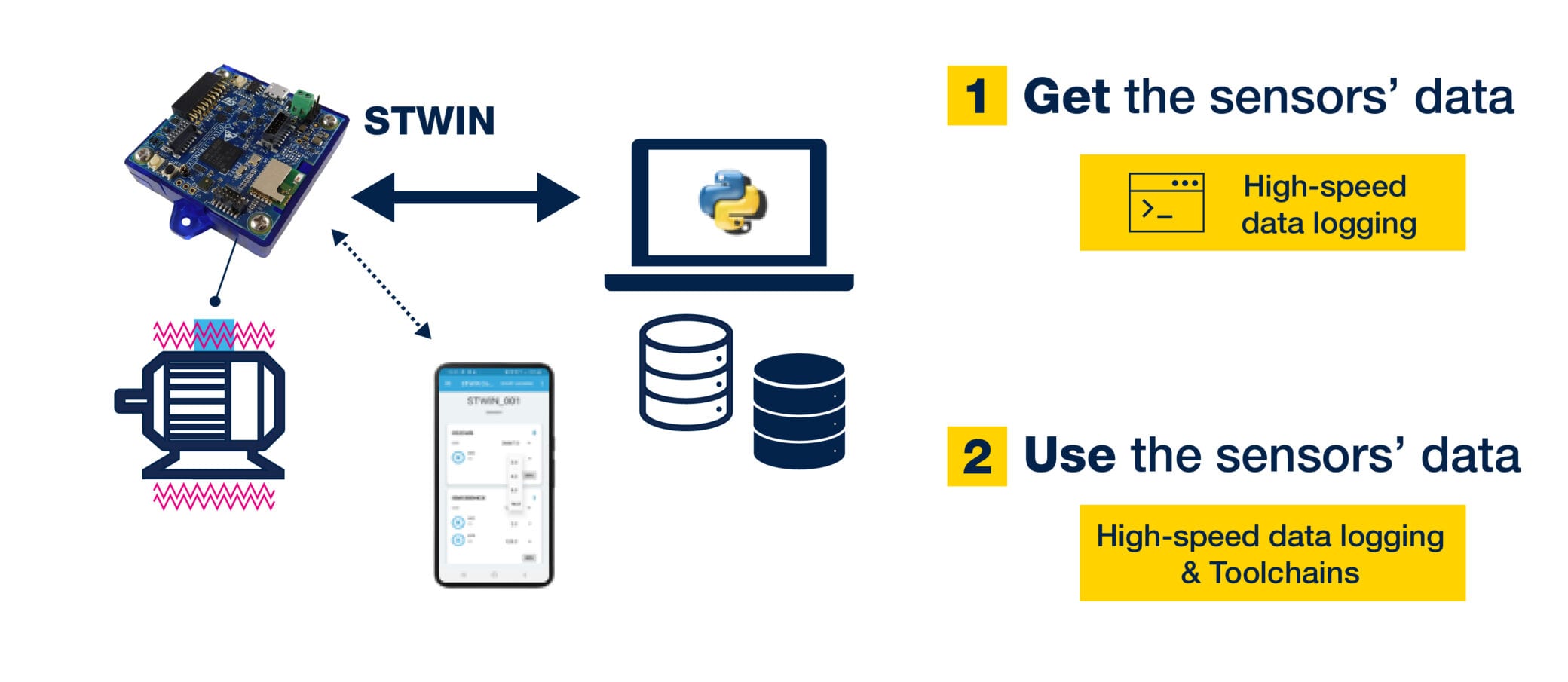
STEVAL-STWINKT1B: New Software Packages for AI at the Edge
High-Speed Data Logging via USB and SD Card with Real-time Control via BLE App
The launch of STEVAL-STWINKT1B followed a significant update to ST’s FP-SNS-DATALOG1 data-logging software expansion package. The solution helps developers collect and save sensor data. Users can then store the information onto a micro SD card or on a PC host connected via a USB port offering a data rate of up to 6 Mbps. It even allows teams to configure the Machine Learning Core of the ISM330DHCX while providing a dedicated Python SDK (FP-SNS-DATALOG1_V1.0.0\Utilities\Python_SDK) that enables developers to parse and plot data points or even export datasets to Cartesiam’s framework, the French company specializing in machine learning at the edge.
The FP-SNS-DATALOG1 Function Pack also represents a new approach to data logging. Indeed, with the arrival of STEVAL-STWINKT1B, ST offers an application that takes full advantage of all that Bluetooth has to offer. Indeed, users can select and configure sensors, control the data acquisition process, and label datasets in real-time on a smartphone with the ST BLESensor mobile app, while storing information on an SD Card with the same level of flexibility and ease of use as a PC running the Python SDK or a Command Line Interface. Moreover, the firmware’s structure is easily reusable on other STM32 platforms or with firmware packages like FP-AI-NANOEDG1.
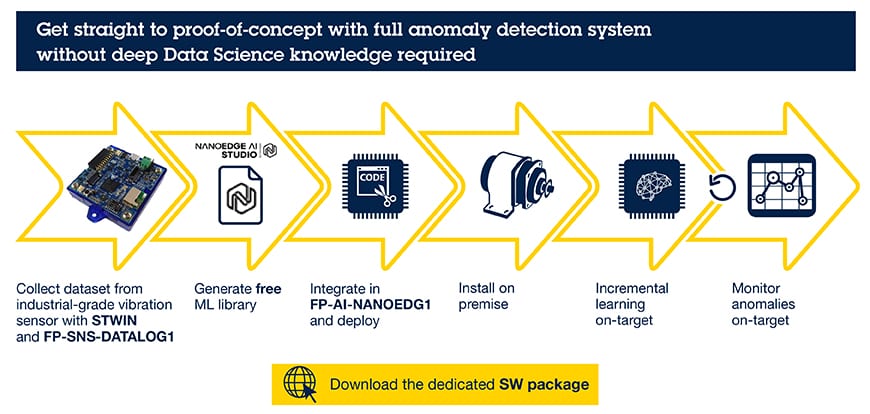
Condition Monitoring and Anomaly Detection at the Edge
FP-AI-NANOEDG1 is a software solution with application examples that allows users to train and run machine learning algorithms on the same device for condition monitoring applications. As the name suggests, it helps developers take advantage of the NanoEdge AI solution from Cartesiam, a member of the AI ST Partner Program.
The firmware allows developers to host the machine learning-based anomaly detection library generated by NanoEdge AI Studio and deploy it for free on some ST board, including the STEVAL-STWINKT1B. This collaboration with ST will allow engineers to develop their condition monitoring solutions in just a few steps. Combined with the myriad of sensors installed on the STEVAL-STWINKT1B, the FP-AI-NANOEDG1 opens the door to new anomaly detection applications as well as the ability to create minimum viable products with few investments and without an extensive AI or Data Science background necessary.


